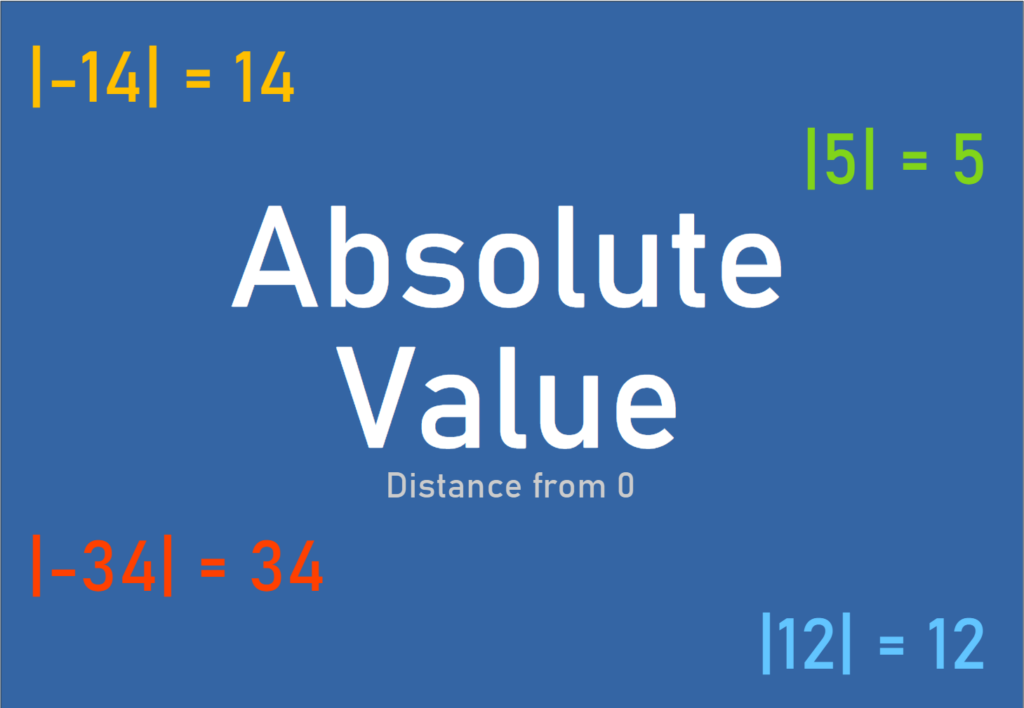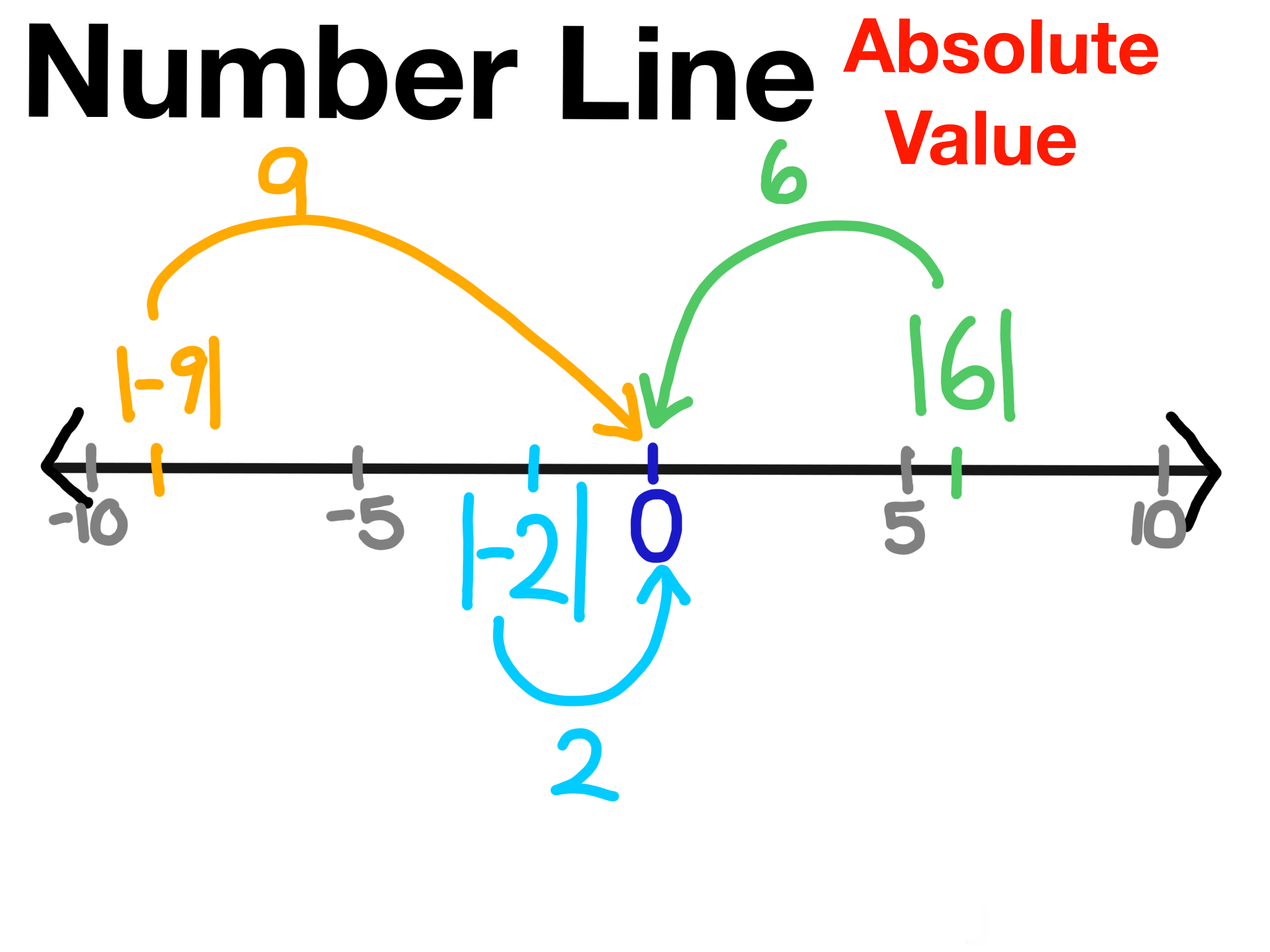
Absolute Value
How does it work?
After carried out, |14| and |-14| are the same. Why? Even though one of these numbers contains a negative sign, they both share the absolute value symbol, which appears as || – two parallel, vertical lines around a number.
But how does absolute value work? To carry out the absolute value of a number, you simply find the distance of a number from 0. For instance, if you have |-9|, this is 9 numbers away from 0, so the absolute value will be 9. This explains why |-14| and |14| are identical in value, because both are 14 numbers from 0. The absolute value of any number is always positive, regardless of whether it is negative or not at the beginning. No number can be a negative number of spaces away from 0.
In other words, absolute value is the distance from zero without directional detail.

Absolute Value at Work… Examples
A few examples of absolute value are:
- |13| = 13; this is 13 numbers, or spaces away from 0.
- |-2| = 2; this is 2 numbers, or spaces away from 0.
- |-178675| = 178675; this is 178675 numbers, or spaces away from 0.

Quiz
Coming soon!